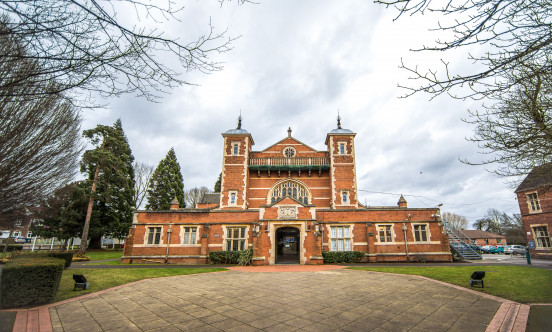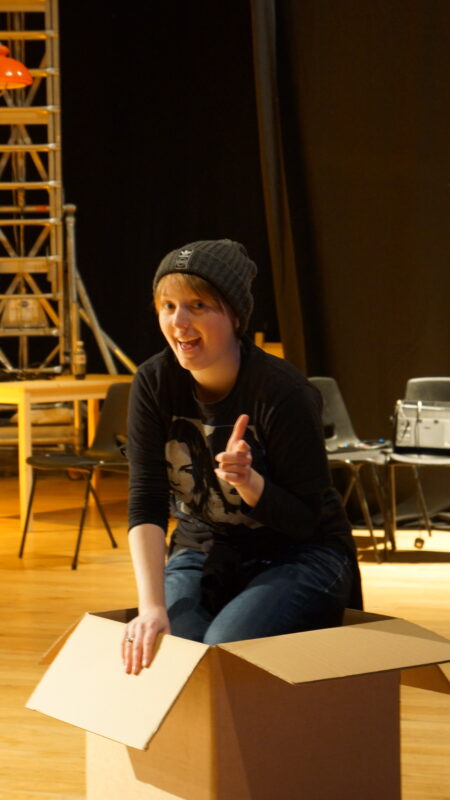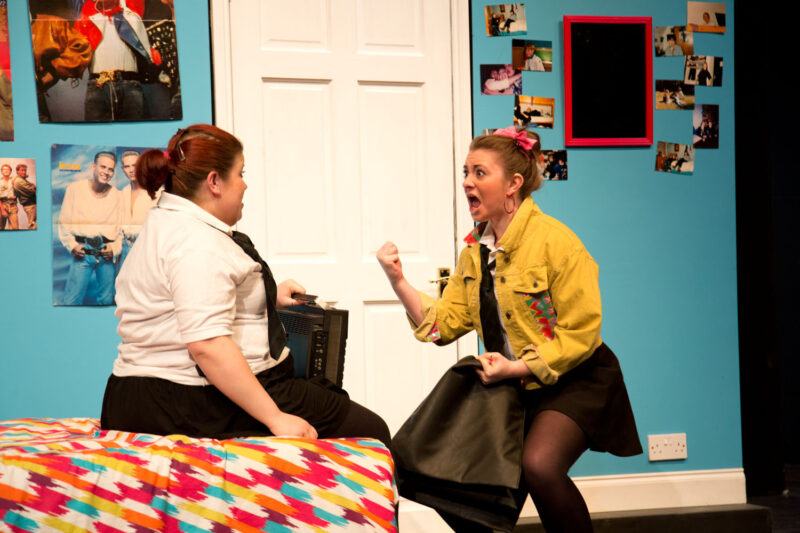



We were so busy admiring the facade of the Grade II listed building that we almost missed it. As we pulled into Harrow Arts Centre we were greeted by our first outdoor banner. We all squealed in delight, a little too excited you could argue. But it was HUGE, easily the width of my living room. I wondered if the cast of Wicked got as excited when the boards went up outside a theatre. It was week five of the tour, our penultimate week. I couldn’t believe how quickly it was going; with only 5 performances left I was going to savour them all, and the best they can be.
At this stage of the tour the production had developed a comfortable and confident rhythm and the cast we’re performing with ease. I watched with satisfaction each night as our choreographed scene changes became more slick with each flat rotation. I was really proud of what we were sharing with audiences and incredibly proud of the company. It’s important, however to ensure that your performances never become stale, they must be present, alive, responsive to a new audience and space.
With this in mind I took the opportunity to arrange some time for the cast to get back to the centre of our piece, strip away the tech and set and refocus on the text. As the cast wandered off to one of the Arts Centre’s function rooms, myself and techie Richard headed for the Studio.
Set in an outbuilding behind the main space, the Studio Theatre is a lovely space, with a cute little cafè called ‘Daisy’s’ next door. A council run venue, Harrow Arts Centre has faced a number of funding cuts over recent years and is currently under threat of closure, much to the disappointment of local residents who have signed petitions in droves.
Harrow Arts Centre may not have the most technically advanced equipment, but what it lacks in modernity it makes up for in heart. The venue is run by a small, but dedicated team of staff and volunteers. Our Techie Richard and HAC’s Joe, Jake and Ralph all worked tirelessly to reconfigure the rig and create everything we needed to make it look and sound great.


That evening we were expecting a pretty full house. Almost 100 people had bought tickets and excitingly around a third of the audience were friends, family, colleagues or our project crowdfunders. We couldn’t wait to share the work with them all, but with excitement comes nerves. As a director you never stop getting that sick, nervous, stomach flipping feeling as the lights go down on the audience and up on the first scene. Unlike the cast or the technical team, you have no control over the performance, you have to sit, amongst the audience and wait with baited breath for their reaction. The first laugh they let out is always a huge relief, and usually I relax into it after that. The audience in Harrow were incredibly generous, reacting audibly throughout and laughing heartily. This meant I could sink into the performance and enjoy it with them, and I really did enjoy it. The extra work that the team had put in that day was clear to see. The scenes were punctuated with more energy, drama and the stakes felt high. The tech worked really well, it sounded and looked great!
My favourite part of the night however was the Q&A. We offered a post-performance Q&A at every venue as we felt it was important for audiences of all ages to have a safe space to open discussions around some of the plays themes. We were so surprised by the take up on our Q & A’s throughout the tour. We had well over 50 people stay, which made for a lovely discussion. We talked about schools and the pros and cons of taking the work directly into school environments. A young audience member reiterated our point that she felt it important that young people are able to watch and participate in discussions on neutral ground in a space owned by neither the company or the school. A space away from uniforms and whispers in corridors, where young people can really open up. We’re not opposed to taking this play into schools, particularly in areas where there is little arts provision, however it reminded us of the importance if creating neutral spaces.
